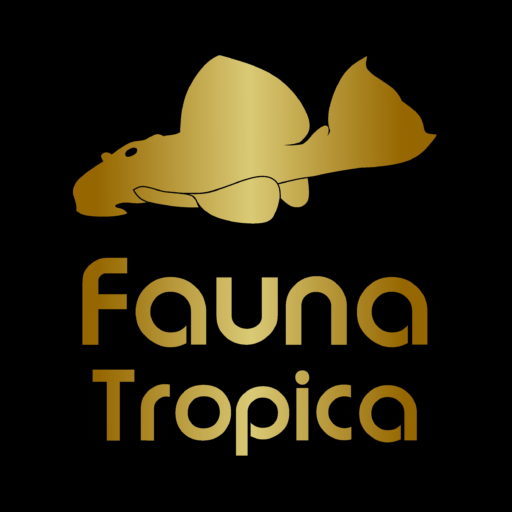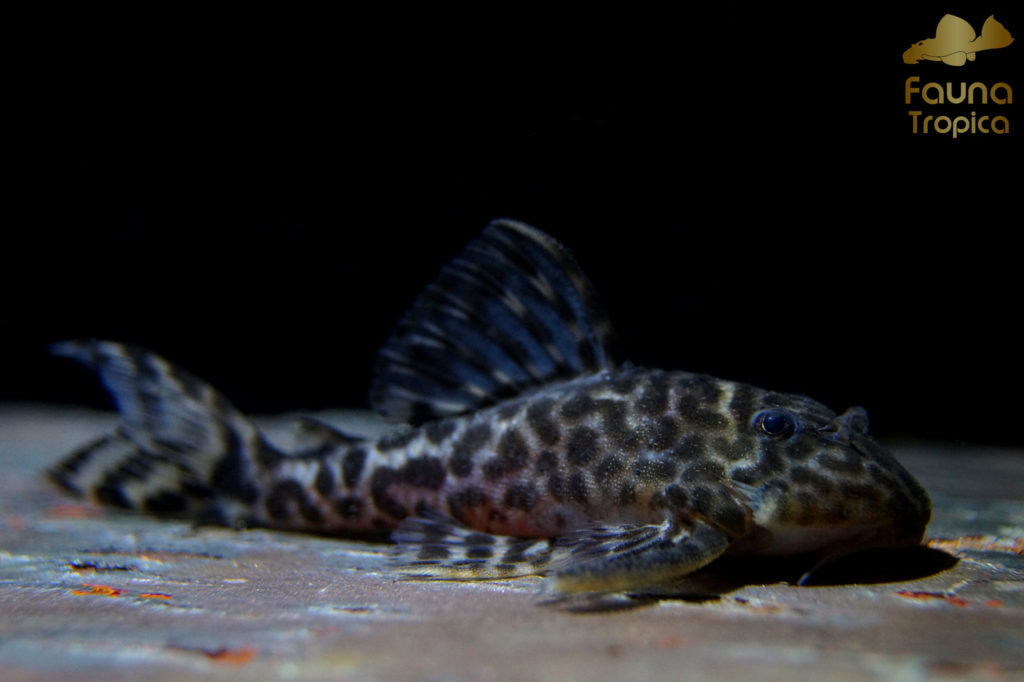
Scientific name: Hypancistrus sp.
L-number: L174
Origin: South America / Brazil / Rio Xingu
Maximum length: 7 – 8 cm
Temperature: 26 – 32 ºC
Diet: Carnivore
- Taxonomy
- Description
- Disribution and habitat
- Diet
- Aquarium
- Sex difference
- Reproduction and breeding
Order: Siluriformes
Suborder: Loricarioidei
Family: Loricariidae
Subfamily: Hypostominae
Genus: Hypancistrus
Species: not described yet
Hypancistrus sp. "L174" is with around 8 cm body length, one of the smallest plecos in the hobby.
This unsubscribed species shows a white-pinkish ground coloration with a grey pattern. Only one stripe behind the head shows a beige coloration. Its pattern has a high variability and can show a transition from dots to worm-lines. Different than most other Hypancistrus, this species has really small eyes and a compact body shape.
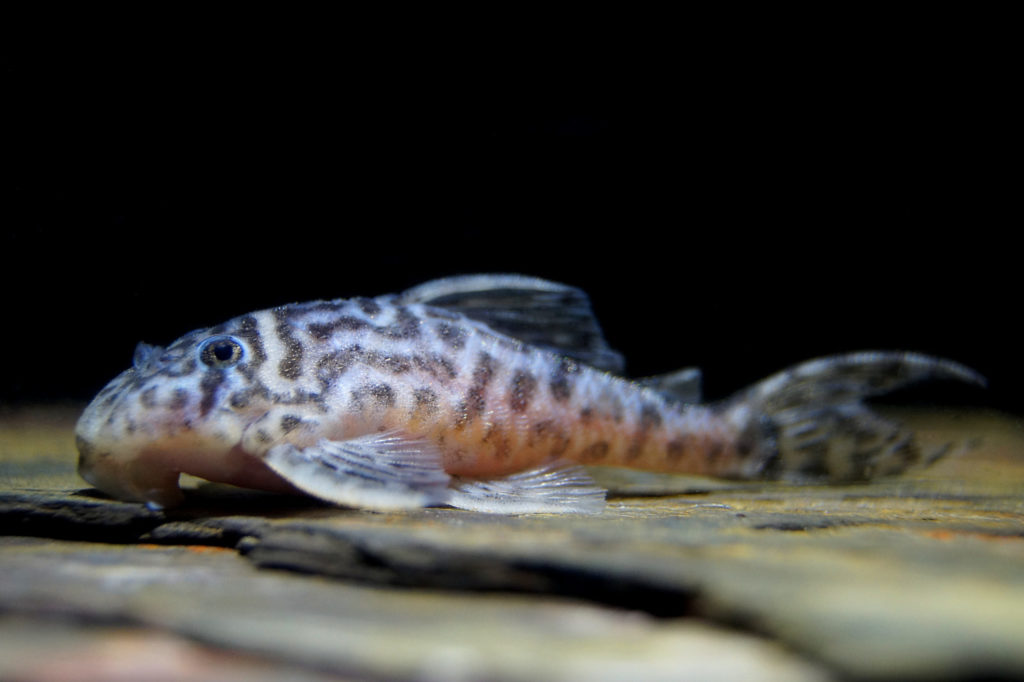
Since its habitat is being destroyed and this species being endemic to only a small area in the Rio Xingu, Hypancistrus sp. "L174" counts as threatened and is therefore excluded for exports.
Hypancistrus sp. "L174" is endemic to a small area in Rio Xingu, surroundings of Altamira of Brazil.
Its habitat consists mostly of dark, rocky substrate with a strong water current. Highly oxygenated and warm water can be found in its biotope. There, temperatures of over 30 °C can be reached.
This little plecos diet consists mainly of insect (larvae), worms and crustaceans.
In captivity this fish will take almost every commercial food. Nonetheless it should be taken care, that its food is rich in proteins.
Tanks upwards from 80 cm length can be used for sheltering a group of H. sp. "L174". The substrate can range from fine sand to rougher gravel. A construction of stone slates with built in little rocks and pleco caves, is a good way, to give these fish the possibilty to hide and breed. There should always be more caves available, then the number of plecos in the tank. This avoids fights for breeding- and hiding spots. They don't like bright light and are in generell shy fish that are rarely seen outside, during the day.
It is important to give the fish their needed water conditions. 28 - 30 °C warm water, a strong current, a lot of oxygen via a bubble stone and weekly waterchanges are mandatory. This species prefers slightly acidic water with an electircal conductivity under 200 micro siemens.
Since Hypancistrus sp. "L174" is a really peaceful species, community tank set-ups can work well, if the needed parameters are given. To dominant fish, that are faster at the food, than the "L174"s, shouldn't be kept together with them.
This really small unsubscribed pleco from the Rio Xingu shows a lot of similarities, in terms of sex differentiation, to the Hypancistrus zebra “L46”.
If we look to the animals from the side, we can see, that males and females share a really similar head- and body shape.
Females tend to "sit" higher, which is caused by their round bellies when being pregnant.
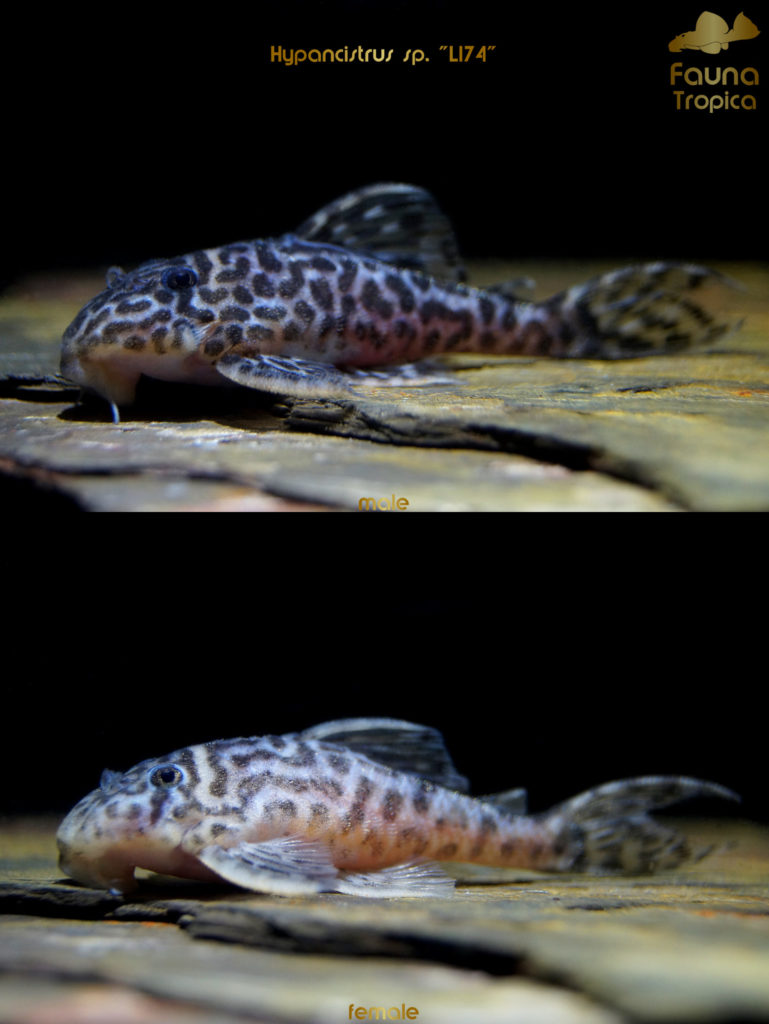
Males show longer odontodes on the gills and the hard ray of the pectorals. On the rest of the head, there can be short and stubby odontodes seen.
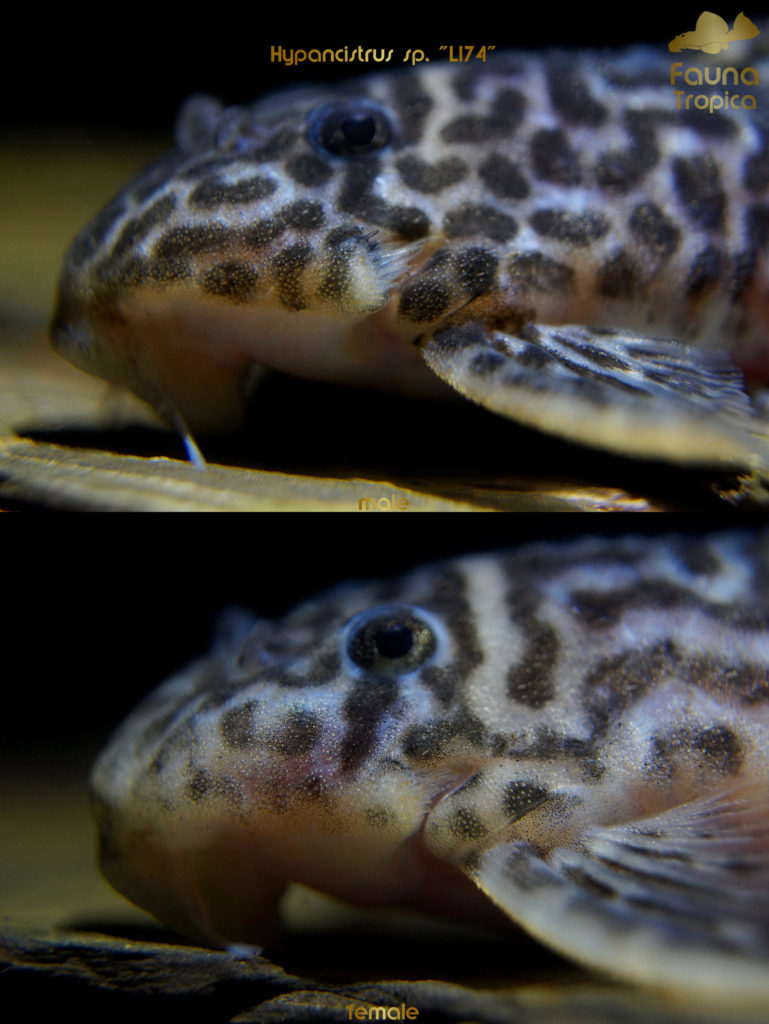
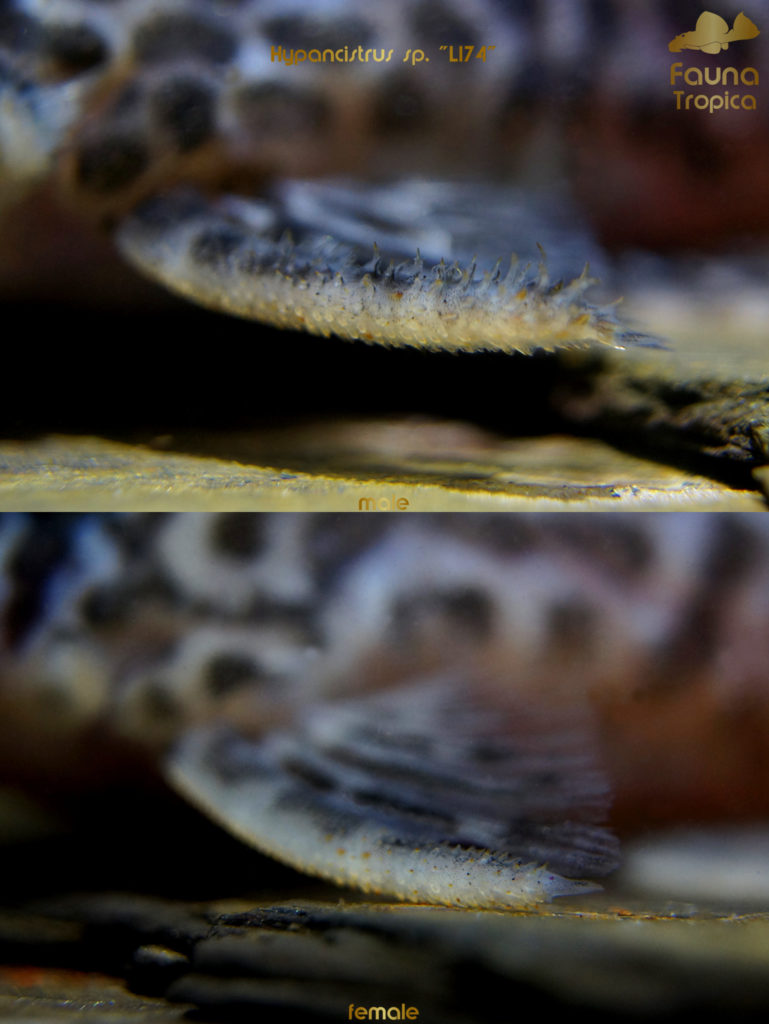
Also the sides and the underside of the tail show a slight growth of odontodes. Females are in comparison more smoother.
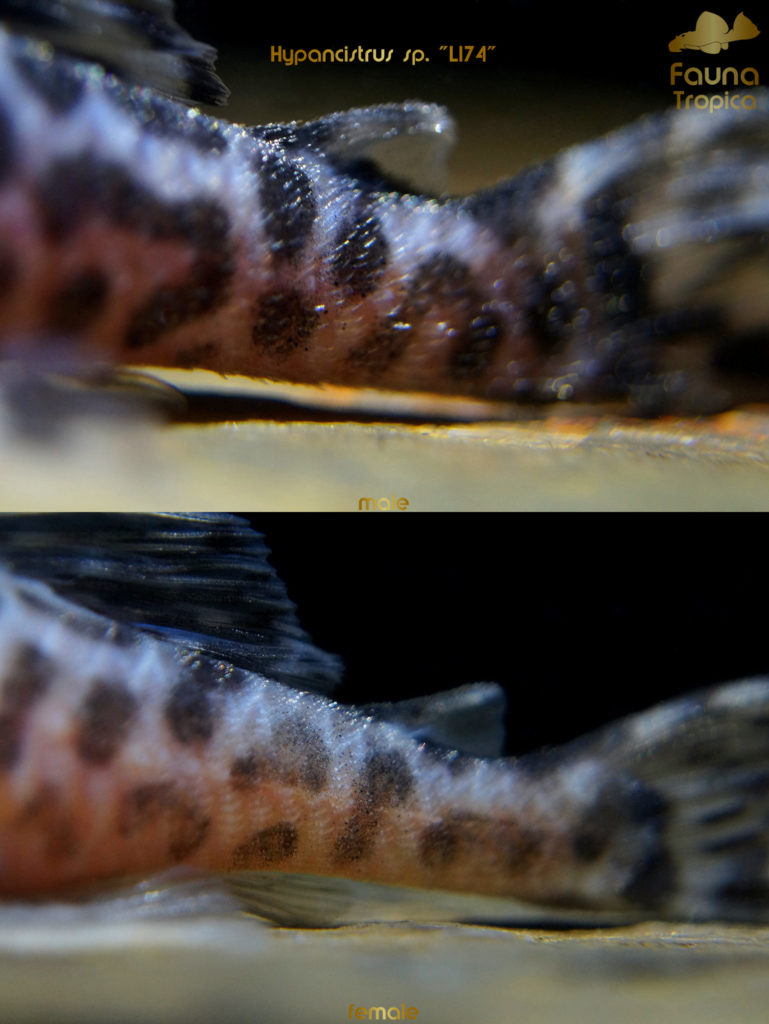
From top, sexing is here the easiest. The body shape tells male and female really easy apart. Females can develop a really round belly and therefore are more curvy. Although males show more belly than, for example "L46", the broadest part of the body is still noticed around the "shoulder"-area. Males also tend to show a thicker tail than females.
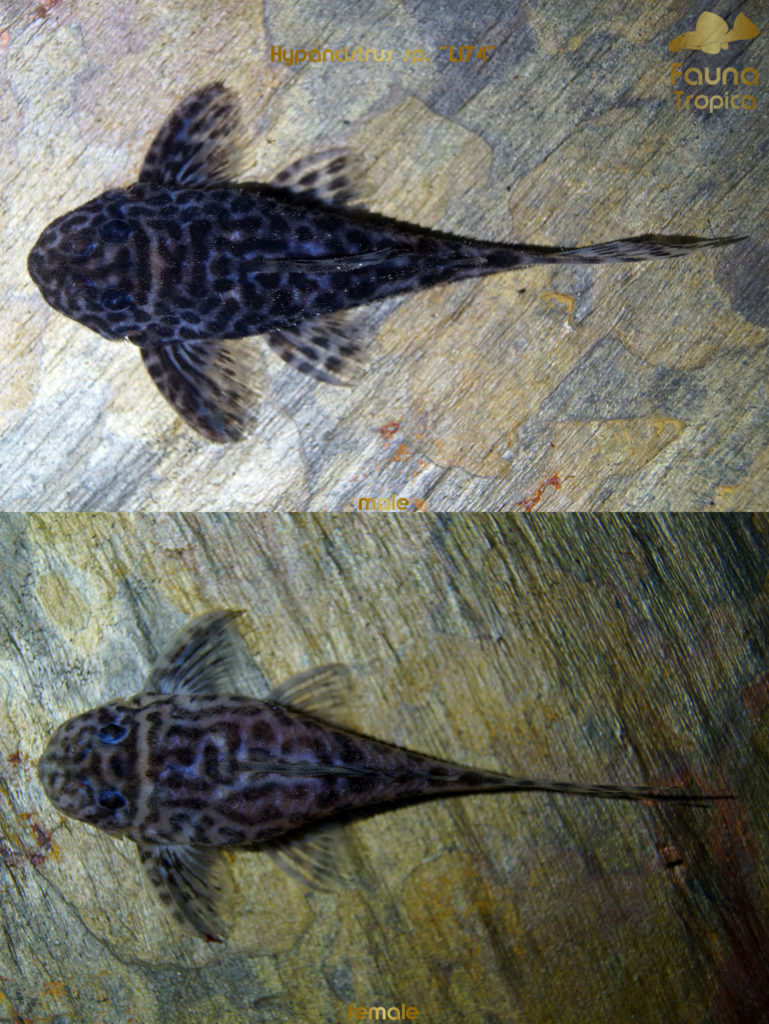
Although the sexual dimorphism of the heads is not typical for Hypancistrus sp., there are slight differences to notice.
Females have a quite large head but it is in overall more rounded than the blocky head of males.
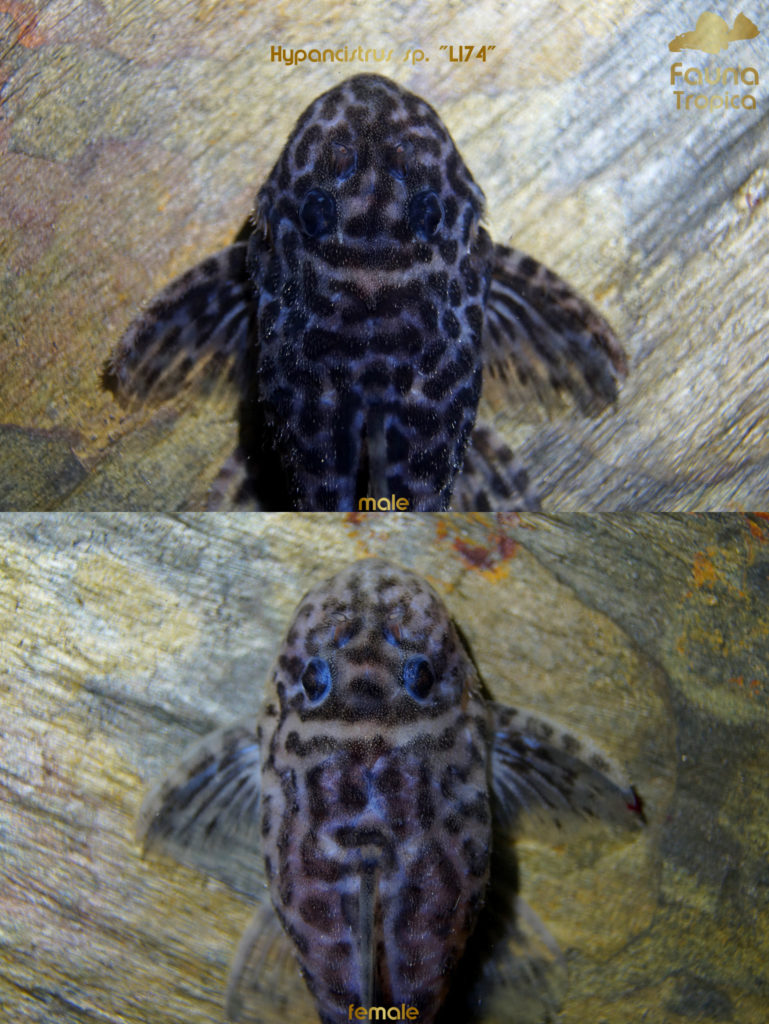
If you take a look at the genital papilla, there is not so much difference to notice, and probably also varies from specimen to specimen. The only outstanding difference is here, that females again show those yellow-orange dots around the papilla, even if its not standing out as much, as with "L46" for example.
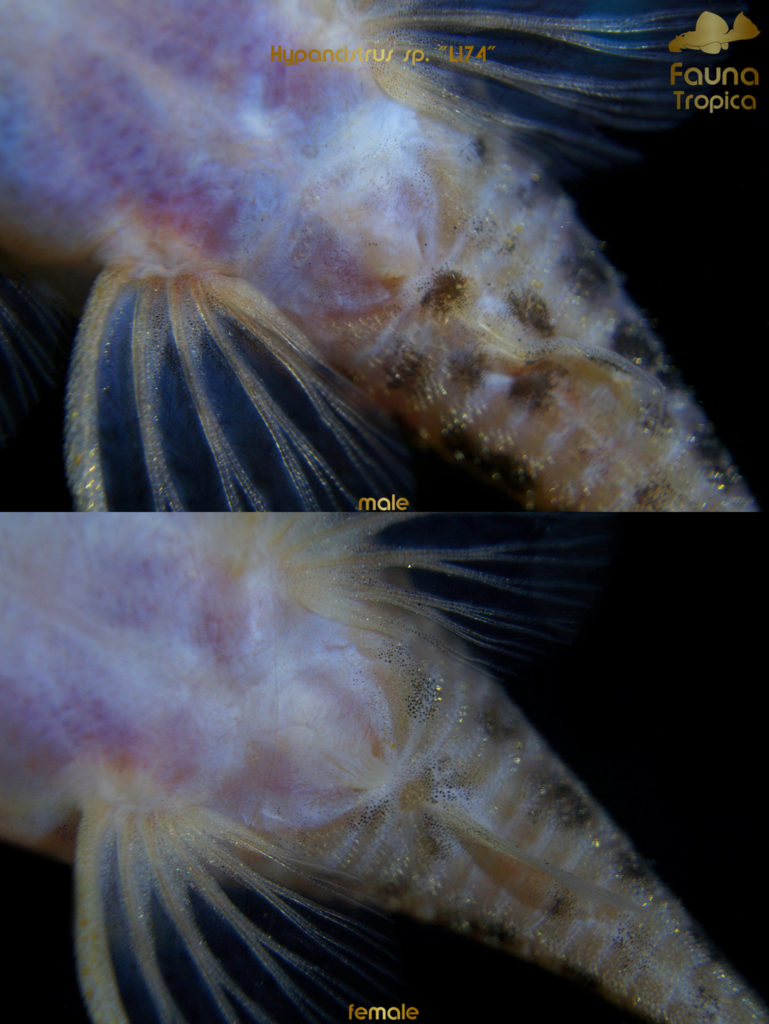
The breeding of this species is not so common in the hobby, but also not so difficult to achieve. Also this Hypancistrus is a cave breeder, where the male takes care of the brood.
To get Hypancistrus "L174" to spawn, first a good ratio of adult (5 - 8 cm) males to females is necessary. It is always good to have slightly more males than females in the tank. That way females can chose with which male they want to spawn. The tank shouldn't be to crowded. An ideal group consists of 6 - 8 specimens in a 100 l tank. The tank should be set up with a lot of hiding spaces, in form of stone slate - constructions. In between the gaps and on the floor, pleco caves should be added. We made best results with caves of the length of 10 cm and a diameter of around 3 - 3,5 cm.
The water parameters should now measure 30 °C, and a e.c. of 100 - 150 micro siemens. Best is, to change the water regularly with osmosis water. To get the highly oxygenated water to where it's needed, it's best to place a streaming pump facing to the entrances of the caves.
The plecos should now be fed really good and rich in proteins. This can be achieved by frosted food or processed food. We made best experiences with snail- and krill granules. Soon the females will build up eggs and the males get spiky and will sit in their caves fanning with their fins.
Once a female is interested in a potential mating partner, it sits mostly for several days next to the cave, that male is occupying. Is everything right, the pair starts to tunnel in the cave. This mostly takes not longer than two days with our breeding group.
After one or two days, only the male sits in the cave. Mostly a bit elevated since he sits with his mouth on a egg batch. This species lays rather small eggs and has spawns up to 10 - 15 eggs. These eggs will now be protected and cleaned by the father, till the larvae hatch. Thats mostly after around 6 - 7 days, depending on temperature.
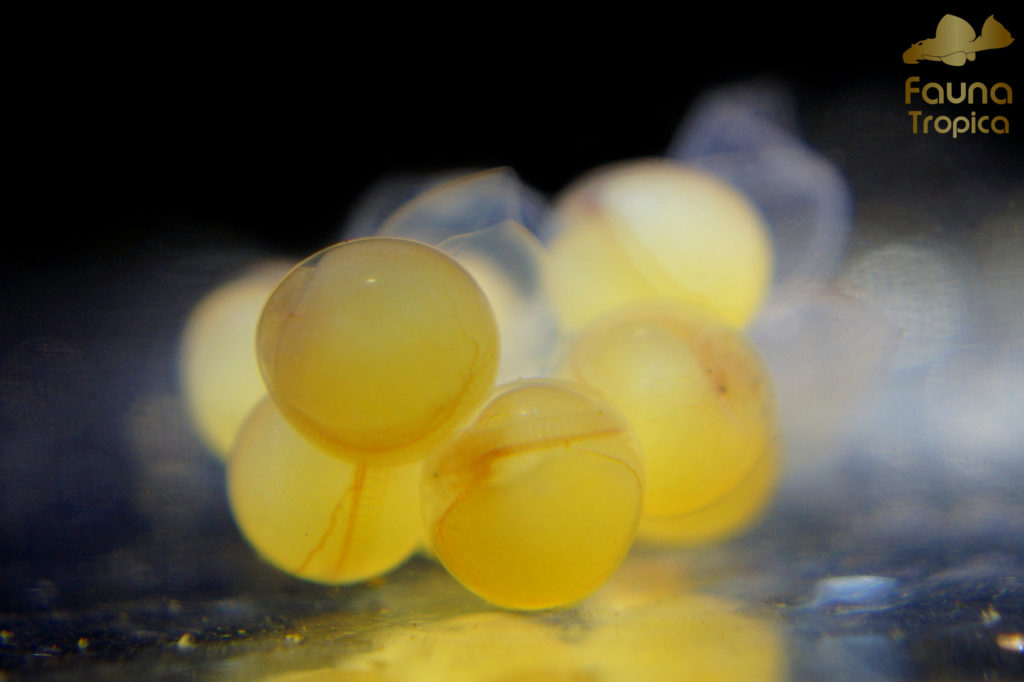
Sometimes the male kicks out the egg batch before hatching. This can happen because of disturbances, bad water quality, bad fertilization or inexperience. Are the eggs older than 2 - 3 days, there is a good chance to incubate them successfully in a floating breeding ring or an egg-tumbler. Both works really well, as long as the eggs are moved and oxygenated enough.
Once the fry hatch, the male still takes care of the brood for several days. In this stage the larvae eat from their yolk sac. Also with arteficial rearing, the babies shouldn't be feed, before the yolk sac is gone. This only has an bad impact on the water quality, which should always be perfect, for a good developement of the youngsters.
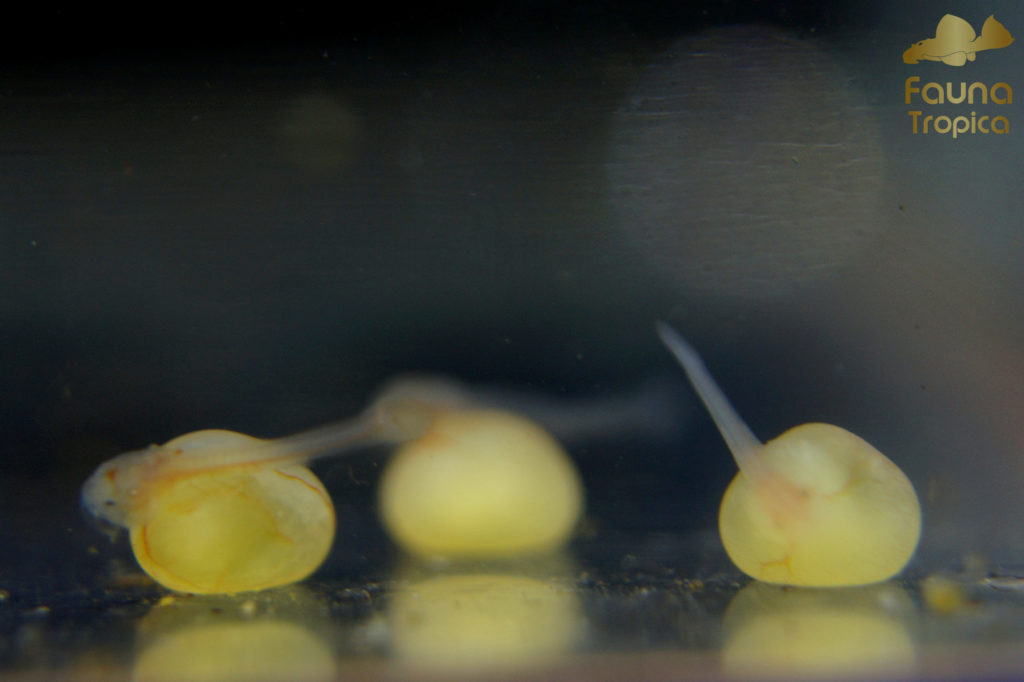
freshly hatched fry
The pigmentation of the first white larvae, starts before the yolk sac is gone. Once they are ready, small doses of grinded food can be given. Best is to feed them two times a day. Non eaten food has to be removed. An easy way to keep the breeding boxes clean, is to add some snails in it. These snails will eat all the left over food. It should only be taken care, that there are not to many snails in the box, stealing the food of the babies.
For shelter a small piece of wood or ceramic, placed in the middle of the breeding box, does its work quite well.
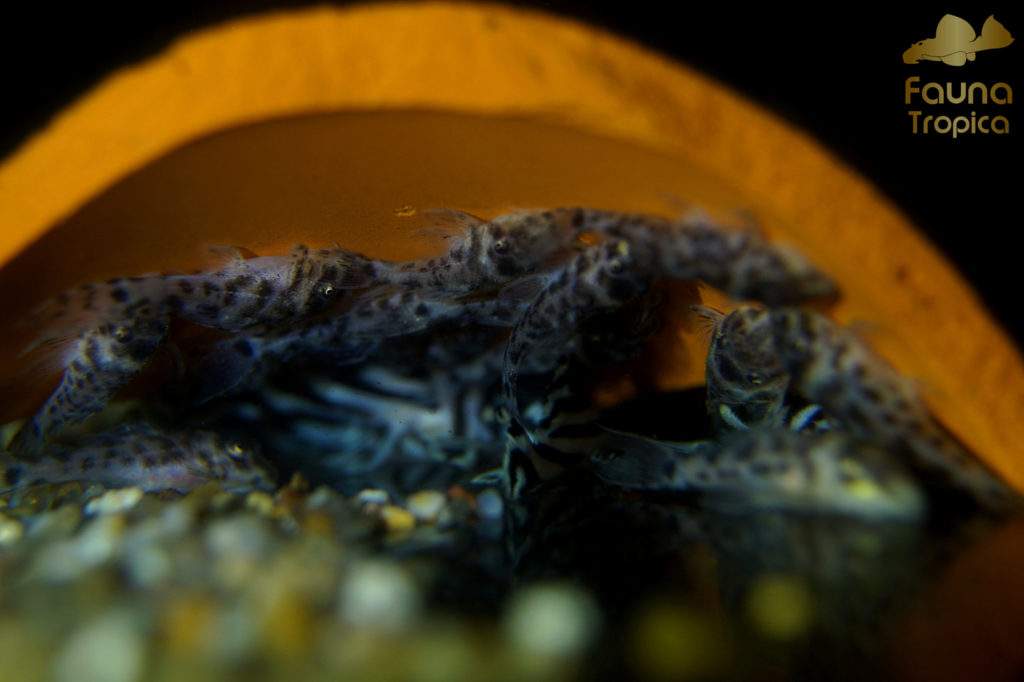
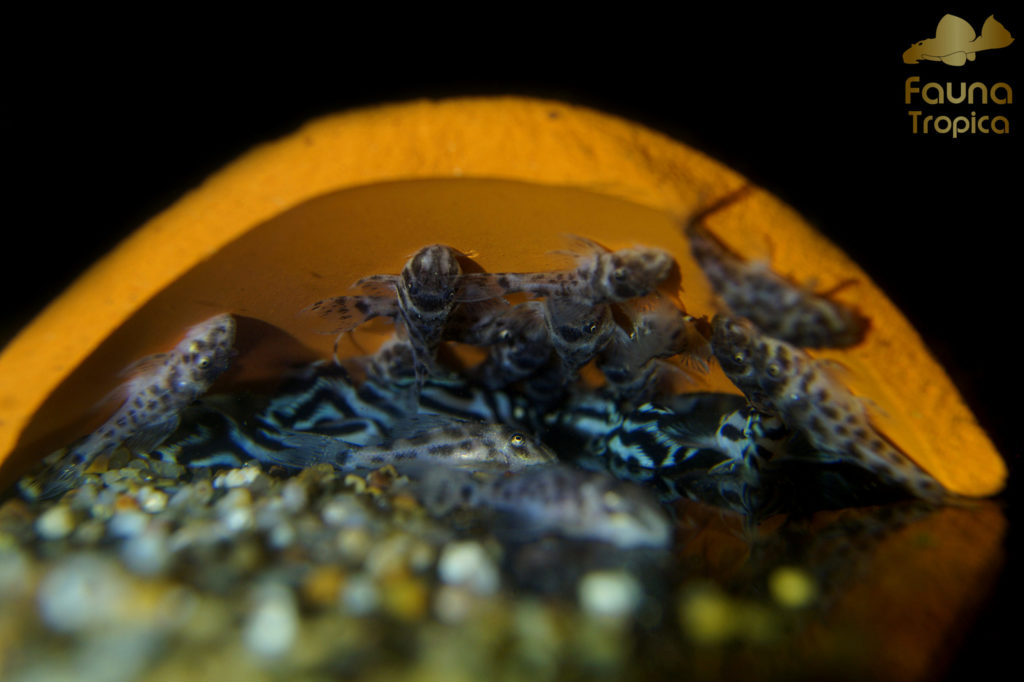
This species is not a fast grower and reaches it 4 cm body length after around 1 - 1,5 years. At this size they are stable and can be given away.
